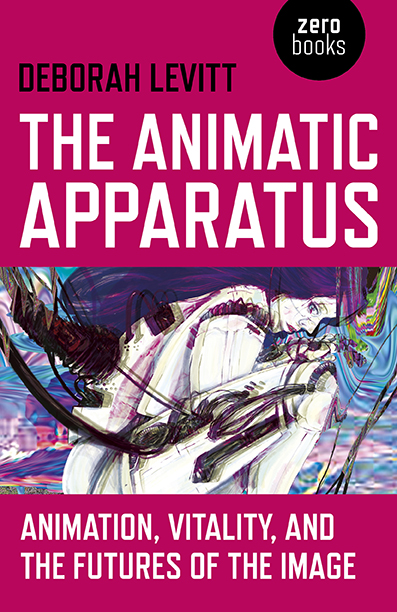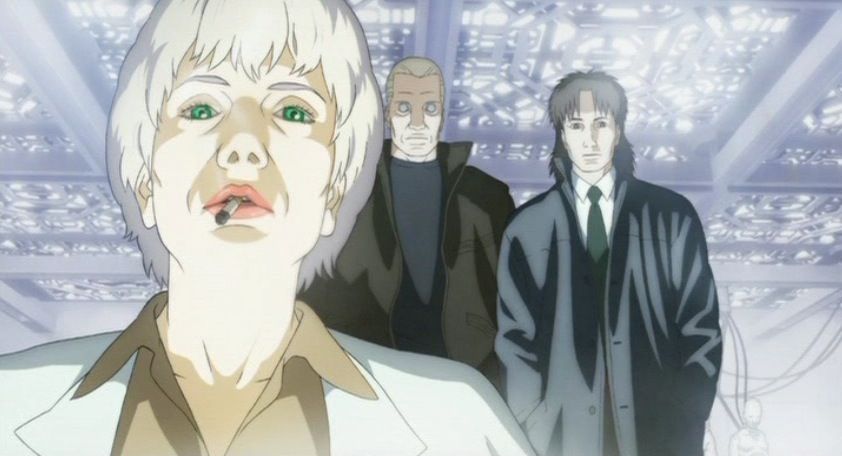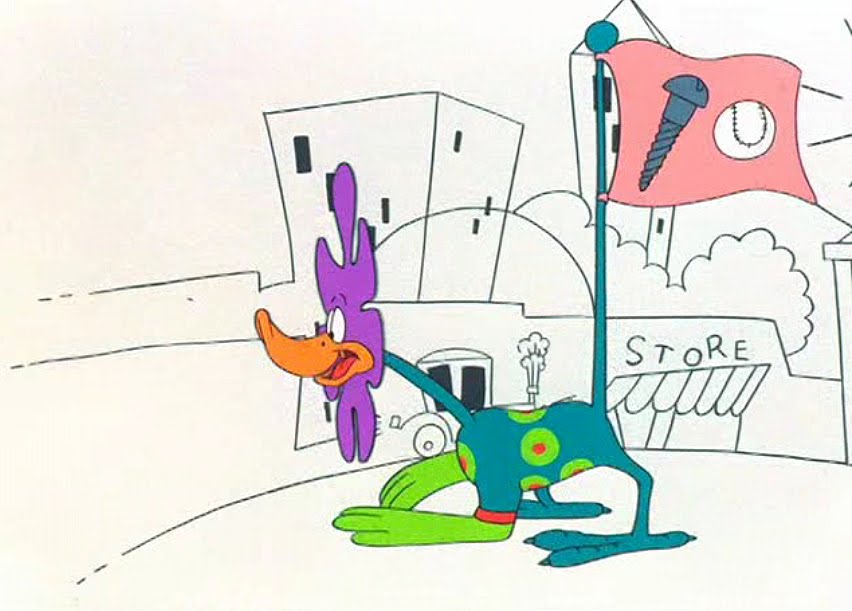Review of Deborah Levitt. The Animatic Apparatus. Winchester: Zero Books, 2018.
Animation is thought made flesh. It gives life, or at least the illusion of a life, to the world as we imagine it. It fabricates perceptions and, in doing so, reverses the empirical hierarchy of thought and world. We are supposed to check our wild imaginations by comparing them with what we see in reality. In animation, we make reality appear however our imagination so desires.
Herein lies the reversal at the heart of Deborah Levitt’s new book The Animatic Apparatus. In this slim and readable volume, she outlines an ontology for animated beings. She offers a philosophy that recognizes the illusory nature of animated life, yet refuses to define it as dead matter or a cheap trick. Animated characters may lack agency and consciousness, but they are real in the sense of containing vitality, energy and identity.
Levitt calls this semi-living world of animation “the animatic” (which, yes, does get confusing when you’re a practitioner who works with animatics – Levitt doesn’t mean these). The animatic in Levitt’s terminology refers to augmented or artificially created supplements to reality. By loosening the term “animation” to “animatic” in this way, she can then address surgical enhancements, digital image manipulation and social media avatars as objects containing a similar, semi-living agency.
If this is sounding like Donna Haraway’s Cyborg Manifesto, that’s because Levitt’s work is largely structured by Haraway’s thought, and by the wilder French theorists on whom Haraway originally drew. The main film Levitt analyses, Ghost in the Shell 2: Innocence (2004, by Mamoru Oshii), also features a cameo from an animated Haraway, and its creator Mamoro Oshii owes a considerable debt to the ‘90s cyber-theorist.
Levitt’s book uses animation as a model for cyborg being. Where Haraway argued that we are already cyborgs, made up of technology and information as much as flesh and bone, Levitt argues that we already have a model for understanding and enjoying this hybridity: the animated cartoon.
We are becoming cartoons. Our identities are more clearly delineated on a phone screen than they are in the messy world of bodies. Then consider AI, holograms and robotics. Consider Hatsune Miku. Cartoons are becoming us.
Perhaps the argument is overstated, in the way that most arguments involving continental philosophy are. Readers familiar with the kinds of jargon used here – hyperreality, rhizomes, biopolitics – should hopefully realize that these categories are too loosely defined and malleable to allow real, concrete thought to occur. Thankfully, Levitt offers us a range of close analyses too.
As mentioned, Levitt’s analysis primarily focuses on the movie Innocence, read through Heinrich von Kleist’s absurdist essay “On the Marionette Theatre”. The latent consciousness that Kleist attributes to marionettes, Levitt argues, helps us to understand Oshii’s robots. The “gynoids” (sex robots) in Innocence can think of nothing worse than becoming human. The artificiality of their semi-life frees them from the human torment of existential uncertainty.
Levitt then peppers this central analysis with illustrative comparisons. The happy disembodiment of cartoon life, for example, is demonstrated by Daffy Duck’s endless metamorphoses in Duck Amuck (1953, by Chuck Jones). Like Oshii’s gynoids, Daffy is happier as a transformable, indestructible cartoon semi-entity than he could be as a creature with a body. If a human was rubbed out of existence with an eraser, they’d be unlikely to ask “Alright, wise guy, where am I?” before being drawn again, wilder and stranger.
The Animatic Apparatus is an intriguing read. Like Oshii’s gynoids, it remains a little loose in its construction and might not bear too close an inspection of its technical details, but it is still philosophically intriguing and really rather pleasurable.
References
Haraway, D. (1991), “A Cyborg Manifesto: Science, Technology, and Socialist-Feminism in the Late Twentieth Century”. Simians, Cyborgs and Women: The Reinvention of Nature. London: Routledge, pp. 149–181.
von Kleist, H. (1972), “On the Marionette Theatre”. Thomas G Neumiller, trans. The Drama Review, 16 (3), pp. 22–26.
Joseph Darlington is Programme Leader for BA(Hons) Digital Animation with Illustration at Futureworks Media School. He holds a PhD in experimental aesthetics and has published widely on technology and culture. He recently guest edited a special edition of the journal Information, Communication and Society on the theme of “Work and Play”.





Thanks for your interesting feedback and commentary, Joseph. I’m so glad you enjoyed reading the book!
It was a pleasure! Look forward to reading more of your work in future 🙂